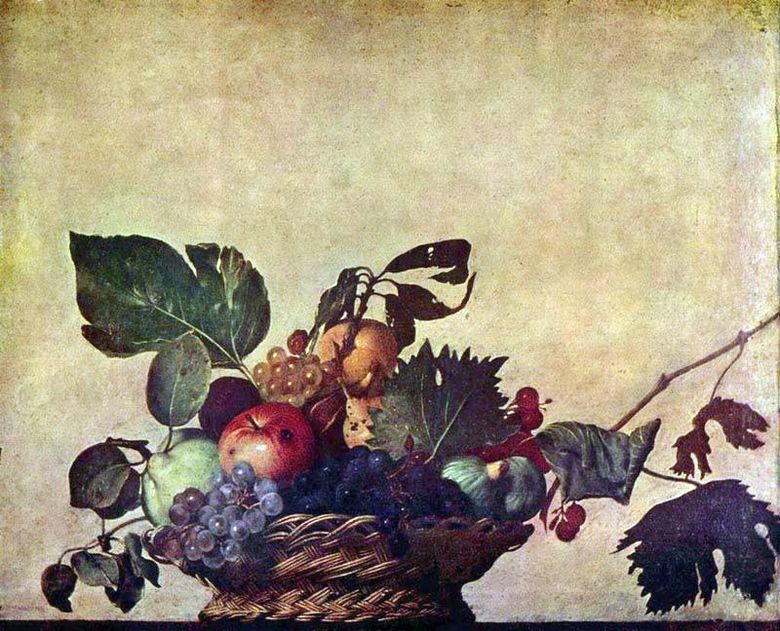
Michelangelo and Caravaggio at age 22, without knowing it himself, became the founder of the innovative genre in painting – a still-life. The artist painted a basket full of earthly fruits: here and a brush of ripe grapes and a lot of fig trees, there are apples and pears.
Fruits are torn together with leaves and are not embellished at all, traces of withering and decay are already visible, some of the leaves turn yellow, wither and curl… everything is natural, as in nature. The picture is naturalistic to the illusory: the edge of the basket and the fruit hang from the table and as if “fall out” onto the viewer – we become accomplices in the image. The lifeless background with complete absence of details is underlined, and occupying the most part of space, completes conceived by the author.
In this work, Caravaggio is everything as in life – everything flows and everything changes, fresh lust is replaced by inevitable decay and death. The master does not stop only on the most accurate representation of nature, here for the first time the intense play of light and shade is noticeable: the bright light from the left from above smoothly passes into the shadow at the bottom right – such recognizable later as Caravaggio!
Such a close attention to the still life in his works the Master demonstrated to the spectator more than once: “The boy bitten by a lizard” in 1595, “Bacchus” in 1595, “Dinner at Emmaus” 1601. Caravaggio in his creations is not a simple contemplator of nature, he is the creator of the brightest pictorial language, his work depicts the struggle of life and death, seeking justice and justice.
 Basket of Fruit by Caravaggio
Basket of Fruit by Caravaggio A boy with a basket of fruit by Michelangelo Merisi da Caravaggio
A boy with a basket of fruit by Michelangelo Merisi da Caravaggio Cupid-winner by Michelangelo Merisi da Caravaggio
Cupid-winner by Michelangelo Merisi da Caravaggio Musicians by Michelangelo Merisi and Caravaggio
Musicians by Michelangelo Merisi and Caravaggio Schulers by Michelangelo Merisi and Caravaggio
Schulers by Michelangelo Merisi and Caravaggio Corbeille de fruits – Michelangelo Merisi da Caravaggio
Corbeille de fruits – Michelangelo Merisi da Caravaggio Patient Bacchus by Michelangelo Merisi and Caravaggio
Patient Bacchus by Michelangelo Merisi and Caravaggio Portrait of Alof de Viñakura by Michelangelo Merisi da Caravaggio
Portrait of Alof de Viñakura by Michelangelo Merisi da Caravaggio